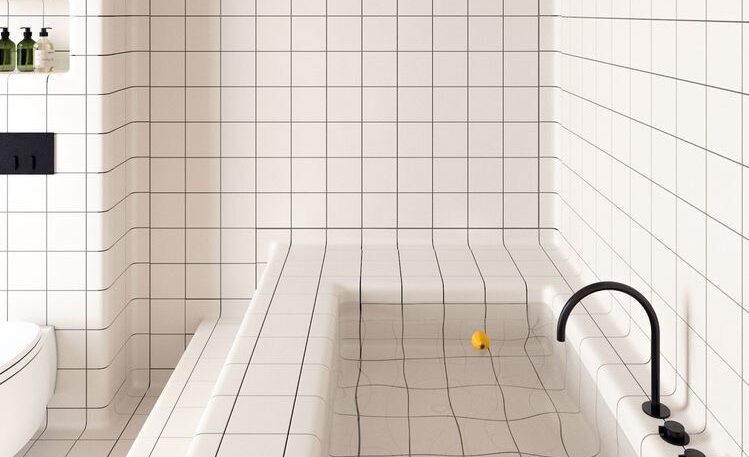Tiles are an essential element of any home decor. Not only do they make a statement, but they also serve a functional purpose. However, choosing the right tiles for your home or laundry shop can be a daunting task, especially if you are not aware of the important things to consider before making a purchase. Here are a few things that you should know before buying any new tiles.
You’ll also like this:
Packing Essentials For A Fabulous Escape
From Infused Water to Tea: A Guide to Healthier Drink Choices
DMK’s Cold Therapy: A Revolutionary Way to Remove Dead Skin Cells
1. Consider the Size and Shape of the Room
Before purchasing tiles, you need to consider the size and shape of the room where you plan to install them. If you have a small room, large tiles can make it appear even smaller. On the other hand, small tiles in a large room can make it look unappealing. Therefore, you need to choose tiles that are proportionate to the size of the room.
The shape of the room also plays a significant role in selecting the right tiles. For instance, if you have a square room, you can choose square tiles, but if you have an irregularly shaped room, you can opt for rectangular or hexagonal tiles. These shapes can complement the room’s shape and make it look more appealing.
2. Decide on the Type of Tile Material
There are various types of tile materials available in the market, such as ceramic, porcelain, glass, natural stone, and cement. Each type of tile material has its unique features, advantages, and disadvantages. Ceramic tiles are a popular option as they are affordable, durable, and easy to maintain. Porcelain tiles are also durable and low maintenance, making them a great option for high-traffic areas. Glass tiles are ideal for creating a modern and sleek look, while natural stone tiles can give a rustic and warm feel to any space.
However, it is important to note that each tile material requires different care and maintenance. For instance, natural stone tiles are porous and require regular sealing to prevent staining. Therefore, you need to consider the pros and cons of each tile material before making a purchase.
3. Choose the Right Tile Color and Pattern
Tile color and pattern play a crucial role in creating the desired ambiance in a room. The color of the tiles can either complement or contrast with the wall and furniture colors. Neutral and light-colored tiles can make a room appear larger and brighter, while dark-colored tiles can create a cozy and intimate atmosphere.
When it comes to tile patterns, you can choose from a variety of options such as geometric, floral, abstract, and mosaic. The pattern you choose can add personality to the room and make it look unique. However, it is important to keep in mind that busy patterns can make a room look cluttered and smaller, while simple patterns can make it look more spacious.
4. Decide if Your Need Specialized Types of Tiles
In addition to the tile materials mentioned above, there are also specialised tiles that serve specific purposes. For example, laundry tiles are specifically designed for use in laundry rooms and other areas where water and moisture are present. These tiles are typically made of porcelain or ceramic, and they have a non-slip surface that helps prevent accidents.
Other types of specialised tiles include outdoor tiles, which are designed to withstand weather and temperature changes, and pool tiles, which are made to resist water and chemicals. By selecting the right type of tile for your specific needs, you can ensure that your tiles will not only look great but also function effectively for years to come.
5. Consider the Tile’s Durability and Maintenance
When choosing tiles for your home, it is important to consider their durability and maintenance requirements. Some tiles are more prone to scratches, chips, and wear and tear, while others are more resistant to damage. Porcelain and ceramic tiles are known for their durability, making them a popular choice for high-traffic areas such as kitchens and bathrooms. Natural stone tiles, on the other hand, are more prone to scratches and chips but can last for decades with proper care and maintenance.
Maintenance requirements can also vary depending on the type of tile you choose. Some tiles require regular sealing to prevent staining, while others are easier to clean and maintain. It is important to choose tiles that fit your lifestyle and maintenance preferences. If you have a busy schedule and don’t have much time for cleaning, you may want to opt for tiles that are low maintenance and easy to clean.
6. Consider the Tile’s Environmental Impact
Another important factor to consider when choosing tiles is their environmental impact. Some tiles are made from sustainable materials and are produced using eco-friendly manufacturing processes, while others are not. If you are concerned about the environment, you may want to look for tiles made from recycled materials or those that are certified by environmentally conscious organisations.
Additionally, some tiles are more energy-efficient than others. For instance, tiles with a high solar reflectance index (SRI) can help reduce the amount of heat absorbed by your home, reducing the need for air conditioning and lowering your energy bills. Tiles that are made with natural materials such as clay or stone can also help regulate temperature and improve indoor air quality.

Choosing the right tiles for your home requires careful consideration of various factors such as the room size and shape, type of tile material, color and pattern, durability, maintenance requirements, and environmental impact. By taking these factors into account, you can ensure that the tiles you choose not only look great but also serve their intended purpose for years to come.
Remember to think about the practicalities of the tiles as well as their aesthetic appeal. Factors such as durability, maintenance requirements, and environmental impact should not be overlooked, as they can have a significant impact on the longevity and sustainability of your home decor. By making informed choices about the tiles you use in your home, you can create a beautiful and functional space that meets your needs and aligns with your values.
You’ll also like this:
Expert Tips on Finding the Perfect Rug for Your Home
Planning an Exclusive Yachting Getaway? 6 Things You Should Know About It









Leave a Comment